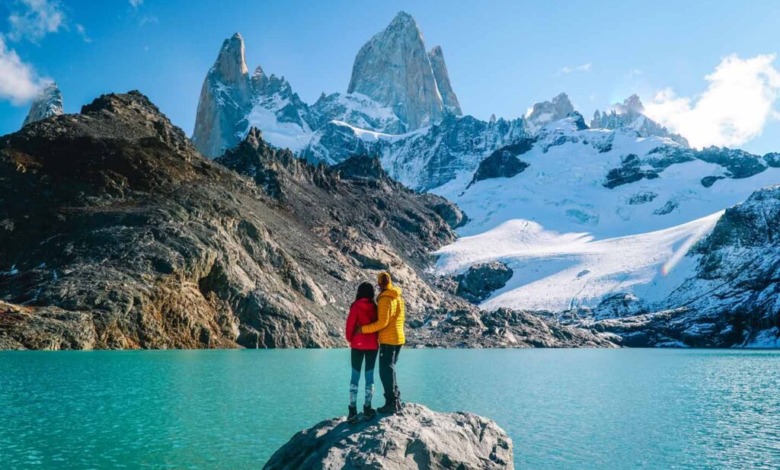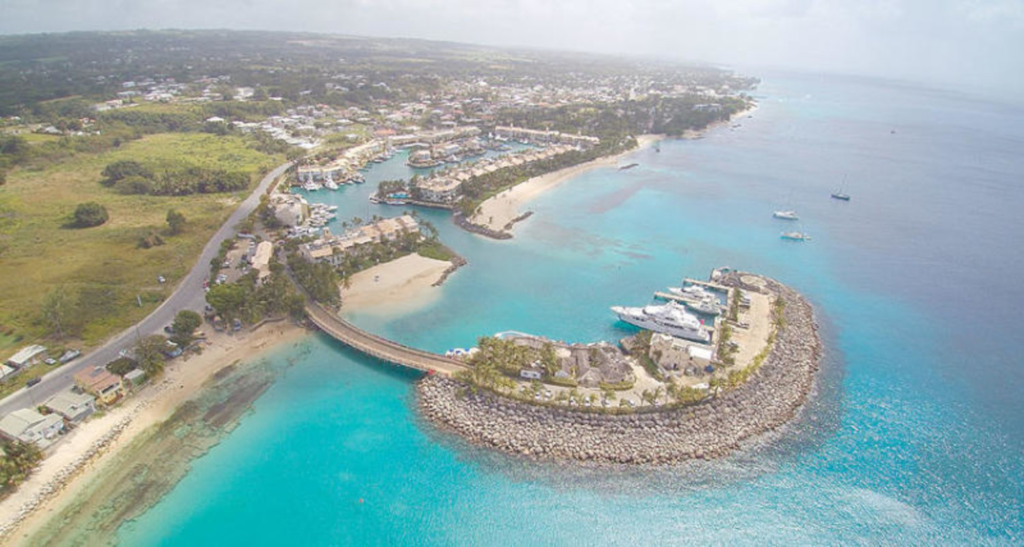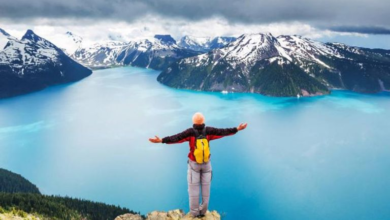Exploring the Wonders of Argentina: A Travel and Tourism Guide

Introduction:
Argentina, a vast and diverse country in South America, captivates travelers with its stunning natural landscapes, vibrant cities, rich culture, and warm hospitality. From the breathtaking beauty of Patagonia to the vibrant streets of Buenos Aires, Argentina offers a multitude of experiences for visitors. In this travel and tourism guide, we will delve into the must-see attractions, cultural highlights, and practical tips for exploring Argentina. Additionally, we will provide a comprehensive guide to moving between cities within the country, ensuring a seamless and rewarding journey.
I. Experiencing Argentina’s Iconic Destinations:
- Buenos Aires: The cosmopolitan capital city that never sleeps, Buenos Aires, beckons with its captivating blend of European charm, tango rhythms, and world-class cuisine. Explore the historic neighborhoods of San Telmo and La Boca, witness a passionate tango performance, and indulge in mouthwatering Argentinean steaks.
- Patagonia: Embark on an unforgettable adventure in Patagonia, a land of awe-inspiring beauty. Marvel at the towering glaciers of Los Glaciares National Park, hike in the majestic Fitz Roy Range, and discover the stunning landscapes of Tierra del Fuego. Don’t miss the opportunity to spot diverse wildlife, including penguins, sea lions, and guanacos.
- Iguazu Falls: Witness the raw power and natural splendor of Iguazu Falls, a UNESCO World Heritage Site. Located on the border of Argentina and Brazil, these magnificent waterfalls will leave you in awe. Take a boat ride under the cascades, explore the surrounding rainforest, and immerse yourself in the breathtaking scenery.
II. Cultural Gems and Local Experiences:
- Tango and Music: Dive into the soul-stirring world of tango, Argentina’s beloved dance. Attend a tango show or join a milonga (a social tango event) to experience the passion and elegance of this iconic dance form. Additionally, explore Argentina’s vibrant music scene, from folk music to rock and pop, by attending live performances and festivals.
- Gastronomy: Argentina is a paradise for food lovers. Sample mouthwatering empanadas, savor succulent asado (barbecue), and indulge in the world-renowned Malbec wines. Experience the local culinary scene through food tours, cooking classes, and visits to traditional markets.
- Gaucho Culture: Delve into Argentina’s cowboy culture by visiting traditional estancias (ranches) in the Pampas region. Witness thrilling horseback riding demonstrations, enjoy traditional folk music and dance performances, and try your hand at gaucho skills like lassoing.
III. Moving Between Cities in Argentina:
- Domestic Flights: Argentina has a well-connected domestic flight network, making air travel the fastest and most convenient option for moving between cities. Major airlines like Aerolíneas Argentinas and LATAM operate regular flights to various destinations across the country.
- Buses: Argentina’s extensive bus network offers an affordable and comfortable mode of transportation. Companies like Andesmar, Via Bariloche, and Crucero del Norte provide long-distance services with different seating options, including semi-cama (reclining seats) and cama ejecutivo (fully reclining seats).
- Trains: While train travel options in Argentina are more limited compared to buses, there are scenic routes worth considering. The Tren a las Nubes (Train to the Clouds) in Salta and the End of the World Train in Ushuaia offer memorable journeys through breathtaking landscapes.
- Car Rental: Renting a car allows for flexibility and the opportunity to explore off-the-beaten-path destinations. Major car rental companies like Hertz and Avis operate in Argentina, and international driving licenses are usually accepted.
Argentina’s vibrant festivals, rural experiences, outdoor activities, and rich cultural scene offer endless opportunities for exploration and immersion. Whether you’re attending colorful carnivals, embarking on rural adventures, engaging in outdoor sports, or immersing yourself in art and culture, Argentina’s diverse offerings are sure to captivate and inspire.

details about travel and tourism in Argentina and a more in-depth guide to moving between cities:
IV. Exploring Argentina’s Hidden Gems:
- Mendoza: Known as Argentina’s wine capital, Mendoza is nestled at the foothills of the Andes and offers breathtaking scenery and world-renowned vineyards. Take part in wine tours, visit olive oil plantations, and enjoy outdoor activities like hiking and horseback riding.
- Salta: Located in the northwest region of Argentina, Salta boasts colonial architecture, stunning landscapes, and a rich indigenous heritage. Explore the colorful Quebrada de Humahuaca, a UNESCO World Heritage Site, and take a scenic train ride on the Tren a las Nubes (Train to the Clouds).
- Bariloche: Situated in the Argentine Patagonia, Bariloche is a picturesque town surrounded by snow-capped mountains, crystal-clear lakes, and lush forests. It’s a paradise for outdoor enthusiasts, offering activities like skiing, hiking, mountain biking, and kayaking.
V. Argentina’s Natural Wonders:
- Perito Moreno Glacier: Located in Los Glaciares National Park, the Perito Moreno Glacier is a magnificent sight. Witness the massive ice formations, listen to the thunderous cracks and booms as the glacier moves, and take a boat ride to get up close to its towering walls.
- Peninsula Valdes: A wildlife lover’s paradise, Peninsula Valdes is a UNESCO World Heritage Site and a sanctuary for marine life. Take a boat tour to spot whales, penguins, sea lions, and elephant seals in their natural habitat.
- Talampaya National Park: This otherworldly desert landscape in the La Rioja province features towering red cliffs and impressive rock formations. Explore the park on guided tours, hike through the canyons, and discover ancient petroglyphs.
VI. Moving Between Cities in Argentina (Continued):
- Ridesharing: In major cities like Buenos Aires, ridesharing services such as Uber and Cabify are widely available and provide a convenient and reliable option for getting around within the city.
- Regional Flights: For exploring remote areas or traveling long distances, regional flights are available through airlines like Aerolineas Argentinas, Andes Líneas Aéreas, and Flybondi. These flights connect smaller cities and tourist destinations.
- Ferries: If you’re traveling to destinations like Uruguay or exploring the Tigre Delta near Buenos Aires, ferries provide a scenic and enjoyable mode of transportation. Companies like Buquebus operate regular ferry services.
- Practical Tips:
- When moving between cities, it’s advisable to check the availability and schedules of transportation options in advance, especially during peak travel seasons.
- Be prepared for long bus journeys, especially when traveling long distances. Consider booking overnight buses with sleeper seats to maximize your time and save on accommodation costs.
- Keep your belongings secure while traveling by using lockable bags or carrying a money belt.
- Familiarize yourself with basic Spanish phrases as English may not be widely spoken in some regions.
- It’s always a good idea to have some Argentine pesos in cash, as credit cards may not be accepted in all places, especially in smaller towns.
Argentina’s diverse landscapes, vibrant cities, and rich cultural heritage make it a captivating destination for travelers. By exploring the country’s hidden gems, immersing yourself in its natural wonders, and using various transportation options, you can create a truly memorable Argentine adventure. Remember to plan ahead, stay informed, and embrace the warmth and hospitality of the Argentine people.

details about travel and tourism in Argentina, as well as more information on moving between cities:
VII. Cultural Experiences in Argentina:
- Museums and Art: Argentina is home to numerous museums and art galleries showcasing its rich history and artistic heritage. In Buenos Aires, visit the iconic MALBA (Museum of Latin American Art of Buenos Aires) or the renowned Museo Nacional de Bellas Artes (National Museum of Fine Arts), which houses an extensive collection of European and Argentine art.
- Football (Soccer): Argentina is passionate about football, and attending a match is an exhilarating experience. Visit iconic stadiums like La Bombonera in Buenos Aires or El Monumental in River Plate. The atmosphere, chants, and energy of the fans are truly unforgettable.
- Festivals and Events: Argentina hosts vibrant festivals throughout the year, celebrating music, dance, and cultural traditions. The Carnival in Gualeguaychú, the Fiesta Nacional de la Vendimia (National Grape Harvest Festival) in Mendoza, and the Buenos Aires Tango Festival are just a few examples of the lively events that showcase Argentina’s cultural richness.
VIII. Moving Between Cities in Argentina (Continued):
- Metro and Public Transportation: Buenos Aires has an efficient metro system, known as the Subte, with multiple lines connecting various neighborhoods. Public buses, known as colectivos, are another affordable option for getting around within the city. Many other cities in Argentina also have their own public transportation systems.
- Taxis and Remises: Taxis are widely available in major cities, and you can easily hail them on the street or find them at designated taxi stands. Remises are private car services that can be arranged through phone calls or mobile apps for more comfortable and reliable transportation.
- Bike Sharing: In cities like Buenos Aires and Rosario, bike-sharing systems are popular and offer a fun and eco-friendly way to explore the city. Companies such as Ecobici and Mi Bici Tu Bici provide bicycles for rent at various stations throughout the city.
- Safety Considerations:
- While Argentina is generally a safe country for travelers, it’s important to take usual precautions such as keeping an eye on your belongings and being aware of your surroundings, especially in crowded tourist areas.
- Use authorized taxis or ridesharing services and avoid unofficial or unmarked vehicles.
- Stay informed about any travel advisories or local safety guidelines issued by your embassy or consulate.
IX. Unique Adventures in Argentina:
- Horseback Riding in the Pampas: Experience the gaucho lifestyle by embarking on a horseback riding adventure in the vast plains of the Pampas. Stay at an estancia and participate in daily ranch activities while enjoying traditional Argentine cuisine.
- Wine Tasting in Cafayate: Discover the vineyards and bodegas (wineries) of Cafayate, located in the picturesque Calchaquí Valley. Sample the region’s exceptional Torrontés white wine and explore the stunning landscapes dotted with colorful rock formations.
- Train Journey to the End of the World: In Ushuaia, the southernmost city in the world, take a scenic train ride on the End of the World Train (Tren del Fin del Mundo). This historic railway takes you through the Tierra del Fuego National Park, offering stunning views of the landscape.
Argentina’s unique cultural experiences, diverse landscapes, and transportation options make it an ideal destination for every type of traveler. From immersing yourself in the vibrant cities to exploring the natural wonders, Argentina promises endless adventures and unforgettable memories. Remember to plan your itinerary according to your interests, check the availability of transportation options, and embrace the warmth and vibrancy of Argentine culture along the way.

some additional details about travel and tourism in Argentina:
X. Unique Natural Landscapes:
- The Andes Mountains: Argentina shares a long border with the majestic Andes Mountains, offering incredible opportunities for outdoor enthusiasts. Explore the stunning landscapes of the Seven Lakes Route (Ruta de los Siete Lagos) or venture to the Aconcagua, the highest peak in the Americas, for mountaineering challenges.
- The Puna Region: Located in the northwest, the Puna region is a high plateau with unique geological formations, salt flats, and vibrant colored mountains. Visit the Salinas Grandes salt flats or explore the surreal landscapes of Quebrada de las Conchas (Shell’s Gorge) near Cafayate.
- The Lake District: In northern Patagonia, the Lake District is a haven for nature lovers. Discover the pristine lakes, dense forests, and snow-capped peaks of Bariloche, Villa La Angostura, and San Martín de los Andes. Enjoy hiking, fishing, kayaking, or simply soaking in the breathtaking scenery.
XI. Adventure Sports:
- Trekking and Mountaineering: Argentina offers a plethora of trekking and mountaineering opportunities. Embark on multi-day treks in Fitz Roy or Torres del Paine, or challenge yourself with a summit attempt on renowned peaks like Cerro Aconcagua or Mount Tronador.
- Skiing and Snowboarding: During the winter months (June to September), Argentina’s ski resorts come alive. Hit the slopes in popular destinations such as Bariloche, Las Leñas, or Chapelco, where you can enjoy a range of winter sports activities.
- Watersports: Argentina’s vast coastline and numerous lakes provide ample opportunities for watersports enthusiasts. Try your hand at surfing, kiteboarding, windsurfing, or kayaking in spots like Mar del Plata, Peninsula Valdes, or the Nahuel Huapi Lake.
XII. Indigenous Culture and Heritage:
- Quebrada de Humahuaca: This UNESCO World Heritage Site in the Jujuy province is renowned for its stunning landscapes and rich indigenous culture. Explore the ancient ruins of Tilcara, visit the vibrant markets in Purmamarca, and witness traditional music and dance performances.
- Indigenous Communities: In various regions of Argentina, indigenous communities welcome visitors to learn about their traditions and way of life. Engage in cultural exchanges, participate in traditional ceremonies, and support local artisans by purchasing their crafts.
- Mapuche Culture in Patagonia: Patagonia is home to the Mapuche people, one of Argentina’s largest indigenous communities. Learn about their customs, language, and ancestral knowledge by visiting Mapuche communities, participating in workshops, or staying in eco-lodges that promote sustainable tourism.
Argentina’s diverse natural landscapes, adventure sports opportunities, and rich indigenous heritage make it a captivating destination for travelers seeking unique experiences. Whether you’re exploring the stunning mountains, engaging with indigenous communities, or indulging in adrenaline-pumping activities, Argentina offers a wealth of adventure and cultural exploration. Remember to plan your activities according to the region’s climate and safety guidelines, and always respect the local culture and environment.

some additional details about travel and tourism in Argentina:
XIII. Gastronomy:
- Asado: Argentina is renowned for its love of grilled meat, and the traditional asado (barbecue) is a must-try culinary experience. Enjoy tender cuts of beef, sausages, and other meats cooked over an open flame, often accompanied by chimichurri sauce and paired with a glass of Malbec wine.
- Empanadas: These savory turnovers are a staple of Argentine cuisine. Empanadas are filled with various ingredients such as meat, cheese, vegetables, or a combination of flavors. They make for a delicious snack or a satisfying meal.
- Mate: A symbol of Argentine culture, mate is a traditional herbal tea made from the leaves of the yerba mate plant. It is typically served in a hollowed-out gourd and sipped through a metal straw called a bombilla. Join locals in sharing mate and experiencing this social ritual.
XIV. Tango and Nightlife:
- Tango Shows: Buenos Aires is the birthplace of tango, and attending a tango show is a must-do experience. Enjoy the passionate dance performances accompanied by live music and immerse yourself in the sultry atmosphere of milongas (tango dance halls).
- Nightlife in Buenos Aires: The city comes alive at night, offering a vibrant nightlife scene. Explore the trendy neighborhoods of Palermo and San Telmo, known for their bars, clubs, and live music venues. Experience the energy of Buenos Aires after dark and dance the night away.
XV. National Parks and Reserves:
- Iguazu Falls: Located on the border of Argentina and Brazil, the Iguazu Falls is a breathtaking natural wonder. Witness the power and beauty of the cascades as they plunge into a lush tropical rainforest. Explore the network of walkways and boat tours for a closer encounter with the falls.
- Los Glaciares National Park: Home to the iconic Perito Moreno Glacier, Los Glaciares National Park is a UNESCO World Heritage Site. Marvel at the towering ice formations, take a boat ride on Lake Argentino, and go hiking in the picturesque surroundings.
XVI. Wine Regions:
- Mendoza: Argentina’s most famous wine region, Mendoza produces exceptional Malbec wines. Visit vineyards, participate in wine tastings, and indulge in gourmet cuisine paired with renowned local wines. Enjoy the picturesque landscapes of vineyards against the backdrop of the Andes Mountains.
- Cafayate: Located in the Calchaquí Valley, Cafayate is known for its high-altitude vineyards and the production of Torrontés, a unique white wine. Experience the charm of this small town, visit wineries, and soak in the tranquil beauty of the surrounding vineyards.
Argentina’s culinary delights, vibrant tango culture, and natural wonders offer a diverse range of experiences for travelers. From savoring traditional dishes to immersing yourself in the rhythms of tango, and exploring the country’s stunning landscapes and wine regions, Argentina promises a memorable journey filled with rich flavors, captivating performances, and breathtaking beauty.

Here are a few more details about travel and tourism in Argentina:
XVII. Beaches and Coastal Destinations:
- Mar del Plata: Located on the Atlantic coast, Mar del Plata is Argentina’s most famous beach destination. It offers miles of sandy beaches, vibrant nightlife, and a wide range of water sports activities. The city also hosts the Mar del Plata International Film Festival, one of the most important film festivals in Latin America.
- Peninsula Valdes: A UNESCO World Heritage Site, Peninsula Valdes is a unique coastal reserve known for its rich marine life. Visitors can spot whales, sea lions, penguins, and numerous bird species. It’s also a breeding ground for southern right whales, making it an excellent destination for whale watching.
XVIII. Historical and Architectural Landmarks:
- Casa Rosada: The iconic Pink House is the presidential palace of Argentina, located in Buenos Aires. Its distinctive pink façade and balcony overlooking Plaza de Mayo have historical significance, as it has been the site of many important political speeches and events.
- Teatro Colon: Considered one of the world’s top opera houses, Teatro Colon in Buenos Aires is renowned for its exquisite architecture and acoustics. Take a guided tour or attend a performance to experience the grandeur of this cultural landmark.
XIX. Wildlife and Nature Reserves:
- Esteros del Ibera: This vast wetland ecosystem in northeastern Argentina is home to a diverse range of wildlife, including caimans, capybaras, marsh deer, and hundreds of bird species. Explore the marshes on boat tours, hike through nature trails, and observe the abundant wildlife.
- Tierra del Fuego National Park: Located at the southern tip of Argentina, Tierra del Fuego National Park offers stunning landscapes, including snow-capped mountains, forests, and pristine lakes. Take scenic hikes, go canoeing, or ride the End of the World Train to immerse yourself in the beauty of this remote wilderness.
XX. Shopping and Markets:
- San Telmo Market: Every Sunday, the streets of Buenos Aires’ San Telmo neighborhood come alive with the Feria de San Telmo, a bustling street market. Browse through antiques, handicrafts, vintage clothing, and enjoy live tango performances and street food.
- Palermo Soho: This trendy neighborhood in Buenos Aires is known for its boutique shops, designer stores, and unique fashion boutiques. Explore the vibrant streets, find unique fashion items, and discover local designers.
Argentina’s diverse range of beach destinations, historical landmarks, wildlife reserves, and shopping experiences offer something for every traveler. Whether you’re seeking relaxation on the coast, exploring historical sites, immersing yourself in nature, or indulging in retail therapy, Argentina promises a wealth of unforgettable experiences.

some additional details about travel and tourism in Argentina:
https://kiwitaxi.tp.st/sFDhyeq5
XXI. Festivals and Cultural Events:
- Carnival: Argentina celebrates Carnival in various regions, with vibrant parades, colorful costumes, and lively music and dancing. The Carnival in Gualeguaychú and the Carnival de Humahuaca are particularly famous for their energetic celebrations.
- Festival Internacional de Cine de Mar del Plata: The Mar del Plata International Film Festival is the most prestigious film festival in Latin America. It showcases a wide range of national and international films, attracting filmmakers, actors, and cinema enthusiasts from around the world.
XXII. Estancias and Rural Tourism:
- Estancias: Experience traditional Argentine rural life by staying at an estancia, which is a working ranch or farm. Enjoy horseback riding, cattle herding, traditional barbecues, and immerse yourself in the gaucho culture. Estancias near Buenos Aires, such as Estancia Santa Susana, offer day trips or overnight stays.
- Pampas Region: Explore the vast landscapes of the Pampas, the fertile plains that stretch across central Argentina. Visit towns like San Antonio de Areco, known for its gaucho traditions and silver craftsmanship. Attend folkloric festivals, witness equestrian shows, and learn about the gaucho way of life.
XXIII. Outdoor Recreation:
- Fly Fishing: Argentina is a paradise for fly fishing enthusiasts, with numerous rivers and lakes teeming with trout and other fish species. Popular fly fishing destinations include the Rio Limay, Rio Grande, and the region around San Martin de los Andes.
- Horseback Riding: Argentina’s wide-open spaces and equestrian traditions make it an excellent destination for horseback riding. Explore the countryside on horseback, ride through the Andes, or join a multi-day trek on horseback, such as the Crossing of the Andes.
XXIV. Museums and Cultural Institutions:
- Museo Nacional de Bellas Artes: Located in Buenos Aires, this museum houses an extensive collection of Argentine and international art. It features works by renowned artists such as Goya, Rembrandt, Monet, and local masters like Xul Solar and Antonio Berni.
- Museo de Arte Latinoamericano de Buenos Aires (MALBA): Dedicated to Latin American art, MALBA showcases a diverse collection of modern and contemporary artworks. It features works by artists like Frida Kahlo, Diego Rivera, and Antonio Berni, among others.
Conclusion:
Argentina’s diverse landscapes, vibrant culture, and warm hospitality make it an enticing destination for travelers. Whether you’re exploring the bustling streets of Buenos Aires, marveling at the natural wonders of Patagonia, or immersing yourself in the country’s rich cultural heritage, Argentina promises an unforgettable experience. By following this travel and tourism guide and utilizing the various transportation options available, you can navigate the country with ease and create memories to last a lifetime.



